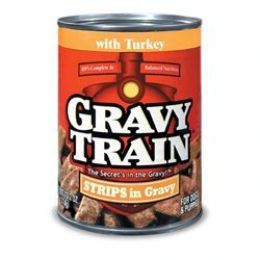Governance by Boondoggle
by Katy Grimes | February 29, 2012 9:27 am
FEB. 29, 2012
The road to California’s financial recovery will be long and arduous. But a first good step is putting an end to taxpayer-financed boondoggles.

We know from the collapse of the Soviet Union and other failed regimes around the world that centrally planned job creation does not work. Such economies share common traits: broken governance, a pattern of politically molded insider deals, a stratified society where political elites pick winners and losers and a failure to deliver the goods.
“A boondoggle[1] is a project that is considered to waste time and money, yet is often continued due to extraneous policy motivations,” is one definition. Sounds like how California does business.
Here A Boondoggle, There A Boondoggle
Whether the boondoggle is an increase in unaffordable, unfunded public-worker pension mandates, or bold manipulations of the state’s contentious pay-to-play initiative process, governance by boondoggle has not served the people of California, nor will it in the future.
When any government ignores the disciplines of the marketplace, the wisdom of individual and personal investment, it will not succeed. For evidence, look no further than the Solyndra scandal[2] and California’s much-touted Stem Cell Initiative.
And what about the state of the Golden State’s finances? State Controller John Chaing, a Democrat, says the state will run out of money in March.[3]
Even voter approved bond financing for education, water and public safety has become suspect. The sale of California voter-approved bonds, even those traditionally considered a safe bet, has slowed to a trickle, with experts saying that California’s debt service [4]is nearing eight percent of the general fund.
The state treasurer, Democrat Bill Lockyer, has also sounded a warning bell. Lockyer said that, in the next 25 years, the state will be asked to build about $400 billion worth of infrastructure projects — everything from schools to flood control measures. “I don’t see the likelihood of public bond financing for as much as half of that number,” Lockyer said[5]. “There is a growing sensitivity to public debt loads. The state’s debt service obligation has been increasing rapidly.”
This fiscal sanity comes from the former state Senate leader and attorney general, long a leader in the Democratic Party.
Everywhere A Boondoggle
Lockyer seems almost fiscally conservative when discussing California’s High-Speed Rail Authority, one of the biggest boondoggles in history. “Because of the inability to finance all the needed infrastructure investments and the constraints on the growth of debt, it requires us to start allocating between the differing competing needs,” Lockyer said[6].
 [7]
[7]
That is an issue for the governor, the Department of Finance and the Legislature. “Is it prudent to cancel another worthwhile project and sell bonds for rail, given the project’s unsettled finances?” Lockyer asked.
Boondoggle Case Study: California High Speed Rail
California’s State Auditor released a report[8] describing the High-Speed Rail project as “increasingly risky,” and said that its procedures for awarding contracts had “compromised providing effective oversight.” The auditor also called into question the accuracy of the High-Speed Rail project’s ridership projections, a crucial part of the venture’s financial feasibility.
When California voters passed the High-Speed Rail Act, Proposition 1A[9], in 2008, what they received in return was a series of financial flim-flams, ballooning cost projections and a laundry list of questions about the level of oversight.
Pot, Meet Kettle
In a recent interview with a San Francisco radio station, Gov. Jerry Brown said that California would become “a Third World country” unless the state builds the $100 billion high-speed rail line. Brown continues to say this with a straight face. Yet it is fraught with mismanagement, cost overruns and shaky ridership projections.
“It’s an odd claim, considering many Third World nations are characterized by crumbling infrastructure, failed boondoggle projects and constant budgetary trouble,” radio host Martha Montelongo recently wrote[10]. “In much of the Third World, a new leader will pour massive amounts of a nation’s fortune into a single prestige project, only to have it fail when poor planning, bureaucratic incompetence and malfeasance slowly eat up all the funds.”
By this definition, Montelongo said that California seems right on track to become America’s first Third World state. And by this correct analysis, Brown is trying to have his cake and eat it too.
Similar to the high-speed rail boondoggle, a similar group of special interests is promoting a nearly $1 billion per year tax hike on the 2012 ballot so that a politically appointed panel can dole out favors to cronies. They are asking California taxpayers to approve another money-pit in Proposition 29[11], to increase the tax on cigarettes by $1.00 per pack.
Claiming to be cancer research, and typical of California’s governance by boondoggle, this $1 billion tax increase duplicates existing programs, while giving a committee of political appointees a brand new pile of taxpayer funds to dole out to special interests. And neither the Governor nor the Legislature can alter the spending, even in the case of abuse, waste or fraud.
At a time when vital government services are threatened with cuts, it makes no sense to approve another special-interest slush fund, driving California to the brink of financial ruin even faster.
Reported Ballotpedia[12], “60 percent of the money, approximately $468 million annually, would to go research of cancer and tobacco-related disease for the purpose of grants and loans to support research. 15 percent, approximately $117 million annually, would go to facilities and capital equipment for research for the purposes of grants and loans to provide facilities, and 20 percent, approximately $156 million annually, would go to tobacco prevention and cessation to the state’s existing tobacco control program.”
The state Legislative Analyst’s Office[13] concurred: The fiscal estimate states Prop 29 would be an “Increase in new cigarette tax revenues of about $855 million annually by 2011- 12, declining slightly annually thereafter, for various health research and tobacco-related programs. Increase of about $45 million annually to existing health, natural resources, and research programs funded by existing tobacco taxes. Increase in state and local sales taxes of about $32 million annually.”
This measure will also result in the hiring of more public employees, who no doubt will receive full state worker union benefits, including rich health plans and dream pensions.
Like the Stem Cell Initiative[14], Proposition 29[15] contains no provision that any of the money raised actually be spent in California.
While the elite and moneyed special interests continue to work to find ways to shake loose more of the green from California’s thinning money tree, voters are being asked to spend more money on the elite’s boondoggle projects.
The problem of course is that the state is not just broke, the deficit and spending problem has resulted in a lower credit rating. Pouring money into boondoggle projects while neglecting vital government services is the surest way for California to join the third-world.
California’s leaders can’t even figure out how to pay for necessary vital services, much less creating entitlements for state residents who do not pay income taxes. California voters need to say no to more new spending, and reject governance by boondoggle.
– Katy Grimes
- boondoggle: http://en.wikipedia.org/wiki/Boondoggle_(project)
- Solyndra scandal: http://en.wikipedia.org/wiki/Solyndra
- State Controller John Chaing, a Democrat, says the state will run out of money in March.: http://www.calwatchdog.com/2012/01/31/chiang-state-broke-on-march-8/
- California’s debt service : http://www.bloomberg.com/news/2011-09-30/california-s-debt-service-rises-to-7-8-of-budget-lockyer-says.html
- Lockyer said: http://high-speedtraintalk.blogspot.com/2011/06/california-state-treasurer-says-that.html
- said: http://high-speedtraintalk.blogspot.com/2011/06/california-state-treasurer-says-that.html
- [Image]: http://www.calwatchdog.com/wp-content/uploads/2011/11/gravy-Train.jpg
- report: http://www.bsa.ca.gov/pdfs/factsheets/2011-504.pdf
- High-Speed Rail Act, Proposition 1A: http://ballotpedia.org/wiki/index.php/California_Proposition_1A,_High-Speed_Rail_Act_(2008)
- Martha Montelongo recently wrote: http://marthamontelongo.blogspot.com/2012/02/boondoggle-projects-threaten-california.html
- Proposition 29: http://ballotpedia.org/wiki/index.php/California_Proposition_29,_Tobacco_Tax_for_Cancer_Research_Act_(June_2012)
- Ballotpedia: http://ballotpedia.org/wiki/index.php/California_Proposition_29,_Tobacco_Tax_for_Cancer_Research_Act_(June_2012)
- Legislative Analyst’s Office: http://www.lao.ca.gov/ballot/2012/29_05_2012.pdf
- Stem Cell Initiative: http://ballotpedia.org/wiki/index.php/California_Proposition_71,_Stem_Cell_Research_(2004)
- Proposition 29: http://www.noon29.com/the-facts/read-the-initiative
Source URL: https://calwatchdog.com/2012/02/29/governance-by-boondoggle/